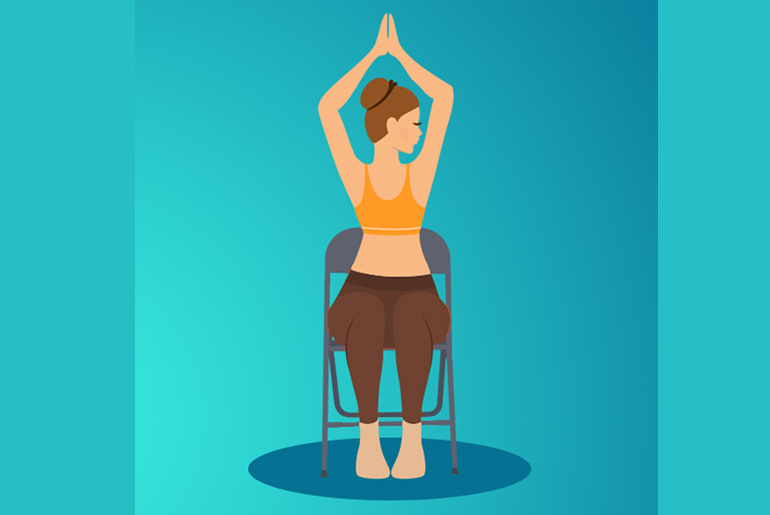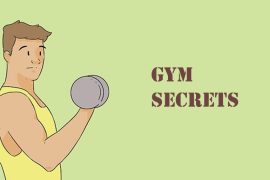Like dejected, anxious shrimp, we’ve all been there, crouched over a screen and slowly blending into our office chairs. Whether you work from a sofa or a cubicle, it’s likely that poor posture and prolonged periods of inactivity are putting a strain on your shoulders. If you’re experiencing shoulder pain, a tight neck, or the infamous “tech-neck tilt,” don’t panic. Your body is only pleading for a little movement; it is not broken.
You don’t require expensive equipment, a yoga mat, or a gym. All you need is ten minutes or so and the willingness to shift your shoulders a little. If your office chair has turned into your worst enemy, these seven easy stretches are ideal for relieving shoulder stress.
1. The reset for shoulder roll
The simplest place to begin is here. It may seem easy, and it is, but it moves your shoulder blades and increases blood flow.
- How to accomplish it: Stand or sit upright. Make ten slow, broad circles with your shoulders rolling forward, then turn around and make ten more circles backward. Take a deep breath.
- Why it’s beneficial: Shoulder rolls help release tense muscles in your neck and traps. Additionally, it awakens your upper back after hours of slouching.
2. Stretching from neck to shoulders
What’s that tightness on your neck? That’s for this one.
- How to accomplish it: Take a straight seat. Do not force your right ear to drop toward your right shoulder. Pull your head slightly toward your shoulder with your right hand for a deeper stretch. After 20 to 30 seconds of holding, switch sides.
- Why it’s beneficial: It works on your sternocleidomastoid muscles (yeah, that’s a real term) and upper traps, which become quite tense from staring at screens all day.
3. Thread-the-needle mode (chair)
This modified variation of the yoga position may be performed while seated.
- How to accomplish it: Place your feet flat on the floor and sit up straight. As though you were passing it through an unseen hole, extend your right arm over your chest and down toward your left side. Your shoulders and upper back will feel stretched and twisted. After 30 seconds of holding, swap.
- Why it’s beneficial: It loosens up the rhomboids and rear delts, which are postural muscles that get rigid when you stoop forward for an extended period of time.
4. Standing or sitting wall angels
When your shoulders feel stuck, this one is strangely gratifying.
- How to accomplish it: With your back flat and your arms in a “goal post” position, with your hands up and your elbows at shoulder height, you can either sit or stand against a wall. As you carefully rise and drop your arms in the shape of snow angels, try to maintain your hands, elbows, and back in touch with the wall. Do this ten times.
- Why it’s beneficial: It increases shoulder mobility and fortifies your postural muscles. Bonus: it turns around that hunchback-of-the-office, chest-caving appearance.
5. Side stretch and overhead reach
This is a terrific way to open up your sides and allow your ribs to grow.
- How to accomplish it: Maintaining a relaxed shoulder, raise your right arm above. Reach above your head and lean gently to the left. Feel the stretch from your hip to your shoulder as you hold for 20 seconds. Change sides.
- Why it’s beneficial: Your side body is compressed as you sit. You may improve your breathing by stretching your lats and intercostal muscles, which are located between your ribs.
6. Arm clasp and chest opener
This exercise helps loosen up your tense chest muscles from typing all day.
- How to accomplish it: Clasp your hands behind your back and stand up. Pull your shoulder blades together as you slowly raise your arms straight. Spread your chest wide. Wait 30 seconds.
- Why it’s beneficial: The forward slump that we all experience is countered by it. It also feels fantastic.
7. Cat-cow sitting (for shoulders and back)
You don’t have to get on the ground, so don’t worry.
- How to perform it: Place your hands on your knees and sit with your feet flat. As you inhale, push your chest forward (cow), gaze up, and arch your back. Pull your belly button in (cat), tuck your chin, and round your back on the exhale. Do this ten times.
- Why it’s beneficial: It releases tension from your shoulders and upper back while also mobilizing your spine. It feels like an internal massage for the spine.
Easy ways to develop the habit:
- A stretch timer should be set for every two hours.
- Before your lunch break, add one move.
- Listen to music or a podcast while performing stretches.
- Make it a mini-movement break rather than a chore.
- Your brain will receive a pleasant boost, your shoulders will sigh with ease, and your body will thank you. Therefore, keep in mind that a few minor adjustments might have a significant impact the next time your office chair becomes a medieval torture device.
- Now, one roll at a time, get up, stretch it out, and preserve your shoulders.
Stretches and suggestions are meant solely as general information and should not be used in place of expert medical advice, diagnosis, or treatment. Before starting a new fitness program, always get advice from your physician, physiotherapist, or other trained healthcare professional, particularly if you have chronic pain or injuries. If you experience sudden or intense pain while performing any stretch, stop right once. When unsure about your physical health, pay attention to your body and see a professional.
Disclaimer:
The information contained in this article is for educational and informational purposes only and is not intended as a health advice. We would ask you to consult a qualified professional or medical expert to gain additional knowledge before you choose to consume any product or perform any exercise.






